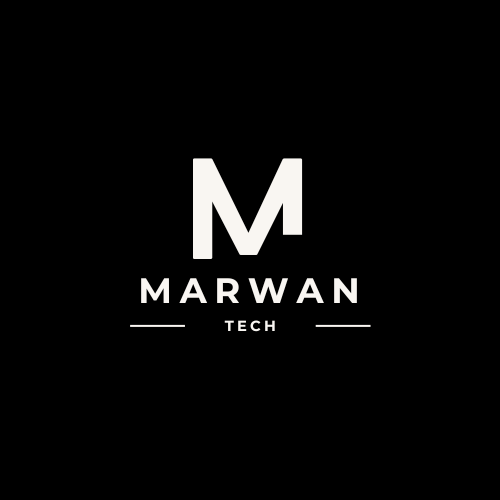Strategies to Build a Culture of Continuous Learning in Software Development Teams

The world of Software development moves quickly, with technologies and best practices constantly evolving. Frameworks like Flutter, React Native, Jetpack Compose, and SwiftUI are regularly updated, making it crucial to stay up to date to build competitive, high-quality apps. While continuous learning is essential (as we discussed earlier), fostering a culture that encourages and supports learning takes intentional effort and strategies.
You can take a looks here in my first article
https://marwanayman.com/why-continuous-learning-is-essential-in-software-development/
This article explores practical steps to foster continuous learning in your development team, complete with actionable examples.
1. Promote Knowledge Sharing
A learning culture starts with open communication and knowledge exchange among team members. Sharing insights and experiences can help bridge skill gaps and reduce dependency on individual experts.
How to Promote Knowledge Sharing:
- Lunch-and-Learn Sessions: Host informal presentations during lunch breaks where team members share topics they’ve explored, such as advanced debugging in Android Studio or leveraging Swift Concurrency for performance optimization.
- Tech Talks: Schedule regular team meetings for developers to present on emerging tools like Firebase App Distribution or Compose Multiplatform.
Example: A developer who recently implemented biometric authentication using Face ID and Android’s Biometric API can share best practices with the team, ensuring others can apply these techniques in future projects.
2. Leverage Pair Programming
Pair programming is not only a productivity tool but also a powerful method for on-the-job learning. Pairing less experienced developers with senior colleagues allows knowledge transfer and builds confidence in new tools and techniques.
Benefits of Pair Programming:
- Encourages collaborative problem-solving.
- Provides real-time feedback and learning opportunities.
- Fosters stronger team connections.
Example: While integrating Jetpack Compose navigation, a senior Android developer pairs with a junior team member to guide them through advanced concepts like managing navigation states and transitions.
3. Allocate Learning Time in Sprints
Dedicate time within each sprint specifically for learning and experimentation. Allow developers to explore new tools, frameworks, or concepts that align with the team’s goals.
How to Implement Learning Time:
- Allocate 10-20% of sprint capacity for research, prototyping, or skill-building.
- Use this time for tasks like evaluating Flutter’s performance for an upcoming project or testing SwiftUI’s Charts framework for data visualization.
4. Invest in External Training and Resources
Sometimes, external training is the best way to upskill your team. Providing access to certifications, workshops, and courses can significantly boost expertise.
Recommendations for External Training:
- Certifications: Encourage team members to pursue certifications like Google Associate Android Developer or Apple’s App Development with Swift.
- Conferences: Sponsor attendance at events like Google I/O, WWDC, or mobile-specific conferences.
- Online Courses: Provide access to platforms like Udemy, Pluralsight, or Coursera for targeted training.
5. Encourage Safe Experimentation
Creating a safe space for experimentation allows developers to test new ideas without fear of failure. This can foster innovation and build confidence in adopting new technologies.
How to Foster Experimentation:
- Hackathons: Organize internal hackathons where team members can prototype features like integrating TensorFlow Lite for on-device AI or experimenting with ARKit for augmented reality.
- Trial Projects: Assign small, non-critical projects where developers can explore new frameworks or tools without affecting delivery timelines.
Example: The team experiments with Compose Multiplatform to build a shared UI for both Android and desktop, testing its viability for future projects.
6. Regularly Review Skill Gaps
Understanding where your team needs support is essential for targeted learning. Use retrospectives or individual check-ins to identify areas where developers want to grow or need improvement.
Strategies to Identify Skill Gaps:
- Conduct anonymous surveys asking developers about their confidence levels with tools like Kotlin Coroutines, SwiftUI, or GraphQL.
- Use retrospectives to highlight blockers caused by unfamiliarity with a technology.
Example: After identifying a skills gap in async programming, the team schedules a workshop on Concurrency in Swift and Kotlin Coroutines to strengthen knowledge in handling asynchronous tasks.
7. Recognize and Celebrate Growth
Acknowledging and rewarding learning efforts can reinforce the importance of continuous learning and motivate the team.
Ways to Celebrate Learning:
Highlight achievements in team meetings or Slack channels.
- Example: "Shoutout to Sarah for mastering Jetpack Compose and sharing her insights during our tech talk!"
- Create a “Learning Champion” award for developers who actively contribute to the team’s knowledge.
- Organize celebrations when the team successfully adopts a new technology or completes a challenging learning initiative.
Example: Celebrate after the successful rollout of SwiftUI-based designs, recognizing team members who led the learning effort.
Integrating Learning into the Workflow
To sustain a culture of learning, integrate it into your team’s daily operations:
- Retrospectives: Use retrospectives to identify areas for improvement and turn challenges into learning opportunities.
- Code Reviews: Provide educational feedback during code reviews, highlighting best practices or new approaches.
- Team Goals: Set learning objectives as part of project milestones (e.g., "Complete training on Firebase Realtime Database before project launch").
Conclusion: Invest in Learning to Drive Growth
Fostering a culture of continuous learning in development teams is not just about keeping up with trends—it’s about empowering your team to innovate, adapt, and excel. By promoting knowledge sharing, allocating learning time, investing in training, and encouraging experimentation, you can create an environment where developers thrive and deliver exceptional results.
Remember, learning is not a one-time activity but a continuous journey. Start small, celebrate progress, and watch your team’s capabilities grow exponentially.
How does your team approach continuous learning? Share your insights and strategies below!
